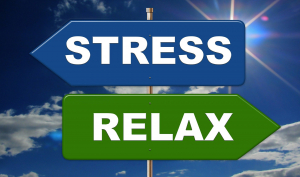
Tip #1: Create a Stress-Free Zone at Home
Have a “stress-free zone” in your home. You can learn to associate a dedicated place with quieting your mind, a place where you sit for a few minutes each day and focus on your breathing. You could devote an entire room to this practice, or just a corner of a room—or even a favorite chair. One busy professional carved out a small space next to the dryer in her basement laundry room. Installing a sliding translucent screen for an outer wall transformed this basement nook into a quiet meditation space. Another person transformed a bedroom corner into a private space by using a sheer curtain as a divider. Your “stress-free zone” should include a dedicated place to sit, such as a chair or meditation cushion, and could also include inspirational items, such as books of short readings, music, or artwork. Taking the time to pause—even for a few minutes a day—can go a long way towards managing stress.
Tip #2: Weave Mindful Moments Into Your Day
Consider weaving “mindful moments” into your day-times when you quiet the chatter in your mind and bring your focus into the present moment. For example, when you walk to the coffee machine in the office, bring all your attention to the soles of your feet as they touch the ground. Any time your mind wanders, gently bring your awareness back to your feet. Or when you eat lunch, bring all your awareness to the process of eating: the pace of your eating, the taste of the food, the colors of the food on your plate. When your attention wanders, gently bring it back. This process of bringing all your attention to what’s happening in the present moment can also go a long way towards managing stress.
Tip #3: Do a body relaxation meditation.
Sit in a quiet place and gently lower your eyelids to a soft gaze or a full close. Slowly move your awareness throughout your entire body, either starting with your feet and working your way up, or starting with your head and working your way down. Pause at each muscle group and see if you can release any tension. You may want to silently say to yourself “relax” with each inhale, and “release” with each exhale. Or you may want to imagine a muscle group getting warmer and warmer until the tension melts away. If you find that you’re more relaxed, see if you can develop a muscle memory of what your body feels like when it’s relaxed, so you can tap into that memory in times of stress.
These three tips are simple to practice, and best of all, they’re free! They don’t require any special equipment or training. All they require is remembering to stop and pause—if only for a few moments.